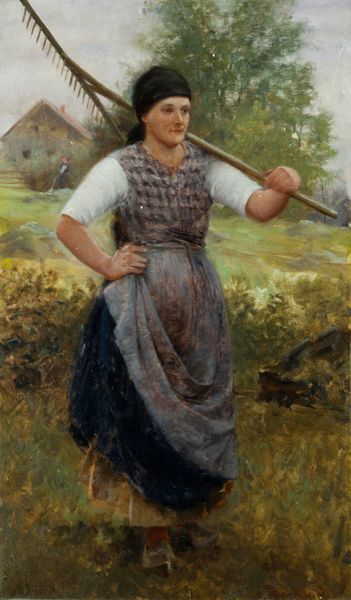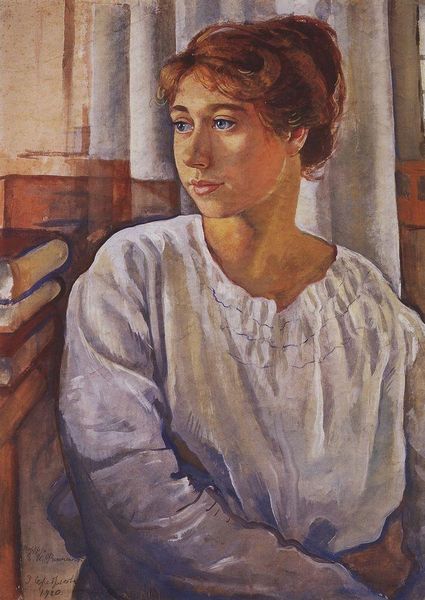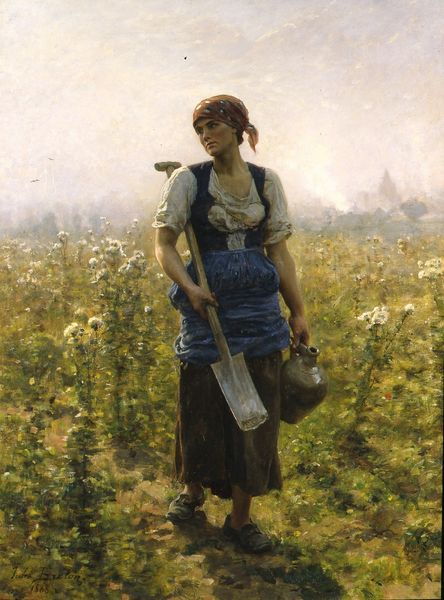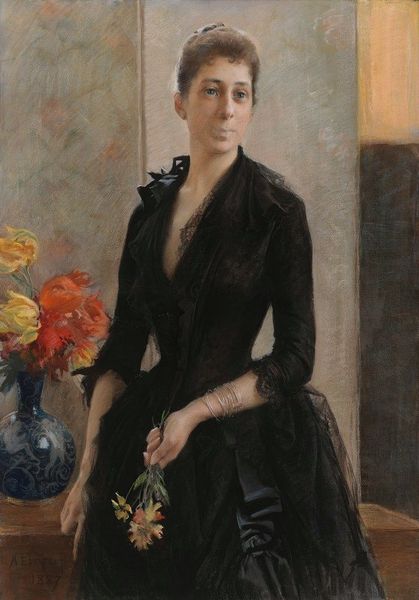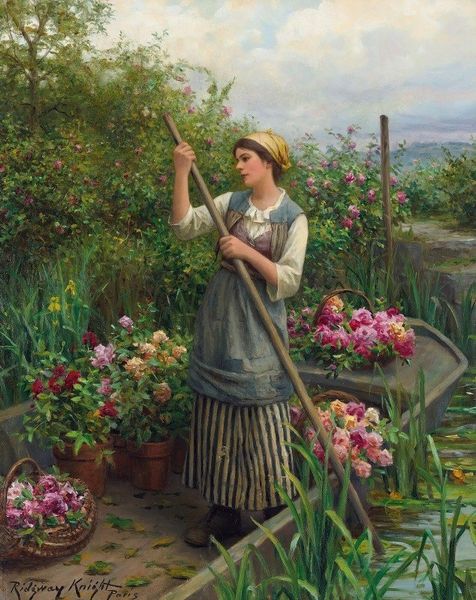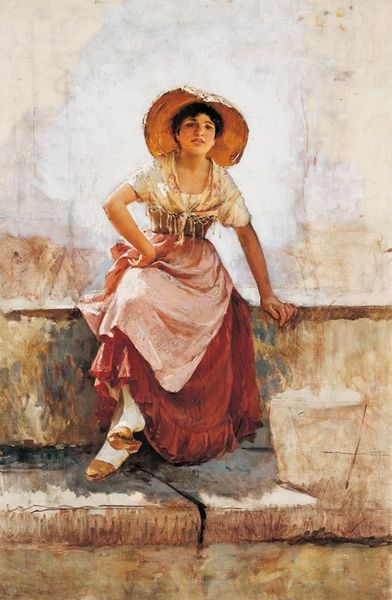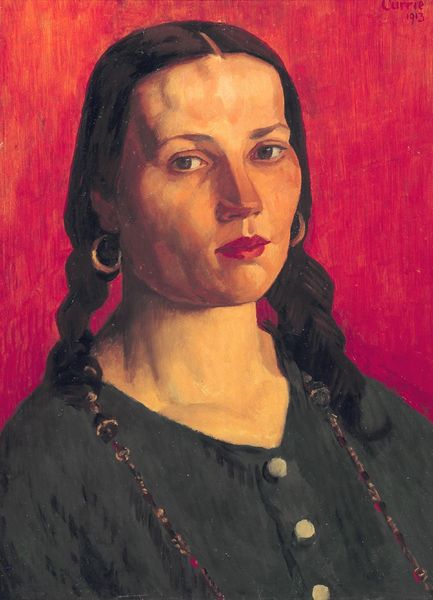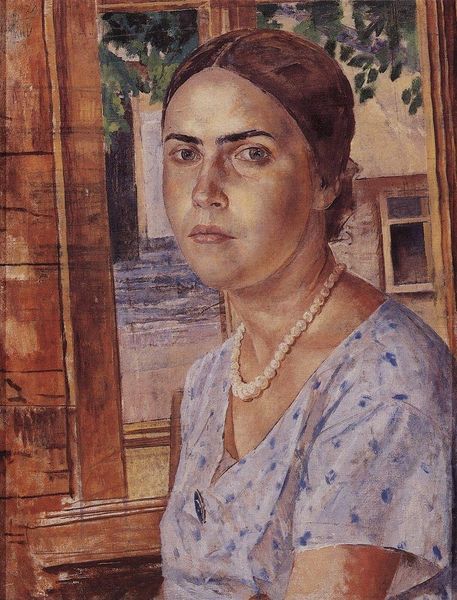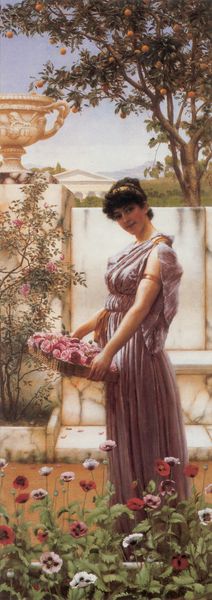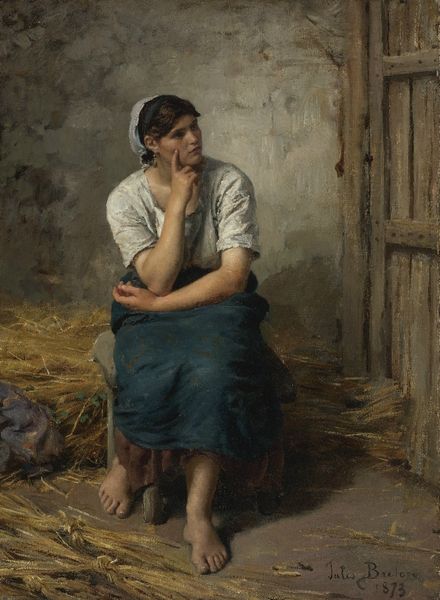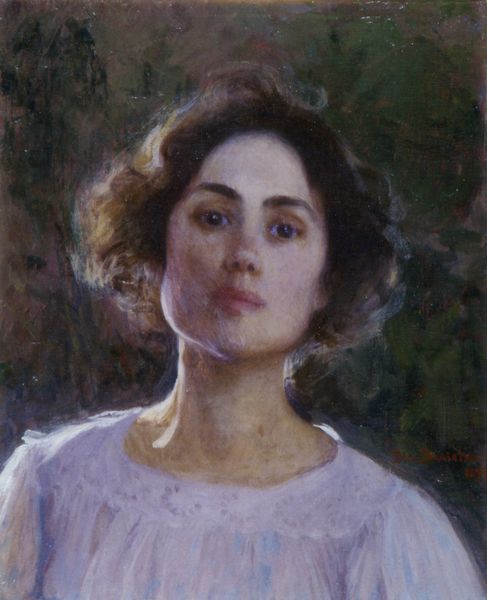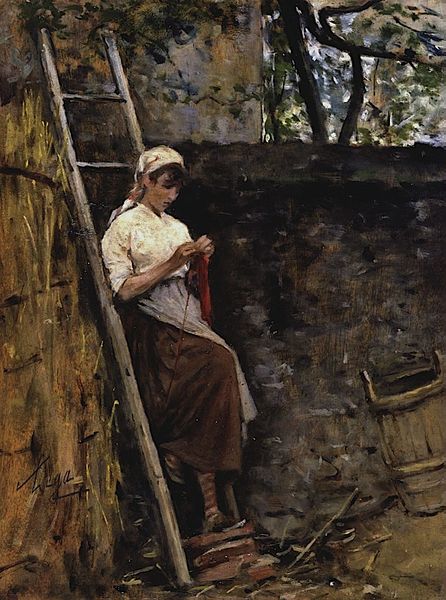
painting, oil-paint
#
portrait
#
woman
#
painting
#
oil-paint
#
landscape
#
oil painting
#
symbolism
#
history-painting
#
portrait art
#
female-portraits
Copyright: Public domain
Curator: Jacek Malczewski's 1917 painting, "Death," certainly arrests the eye, doesn't it? Editor: It's...striking. The woman, rendered in that heavy oil paint, looks resigned. The texture of her dress almost feels woven from grief, and that tool she's holding looks both functional and incredibly symbolic of manual labor. Curator: Indeed. Malczewski often used allegory in his works, reflecting Poland’s tumultuous history. Consider the social context; Poland was partitioned during this period, experiencing profound cultural and political suppression. It reflects his symbolist style that captured national anxieties. The painting involves the intersection of personal, national, and historical narrative. Editor: But how does the choice of material, the application of paint, connect? The sheer weight of the impasto, particularly in her dress, feels directly linked to the oppressive forces acting upon Polish society at the time. Were certain pigments harder to obtain, impacting the materiality and production of works from this period? It also seems that "Death" in the background and the woman's vacant expression show hopelessness. Curator: It’s quite possible. Material scarcity often reflects historical and socio-political limitations. The heavy brushstrokes certainly create a sense of burdened weight. It also relates to the academic historicism promoted at the time through institutions that displayed allegorical history painting. How else would Polish identity survive but through the aesthetic forms promoted at these institutions? Editor: So, it's almost as if the materiality of the artwork and institutional structures reinforce, rather than detract from, the potent emotions portrayed. And, she’s posed adjacent to the open window, hinting at death itself as the face stares hauntingly with weathered, worn features from a landscape suggesting the outside world. I noticed her dress has both purple and red flower adornments, is there something relevant about her clothing to add here? Curator: Interesting observation. The flowers might also point to themes around the cyclical nature of life, adding nuance to the reading of death and potentially new beginnings or change. Editor: Considering both our approaches, there is clearly a dialectic interplay among material reality, lived experience, and the heavy burden of history, shaped and distributed via institutional validation. Curator: Precisely. This interplay enables Malczewski’s paintings to powerfully express not only individual feelings but the weight of collective history, and it still prompts introspection in our current environment.
Comments
No comments
Be the first to comment and join the conversation on the ultimate creative platform.
